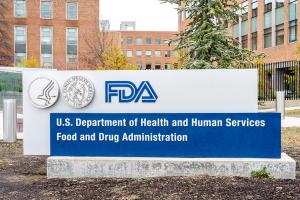Non-Adherence: A Direct Influence on Clinical Trial Duration and Cost
As clinical trials remain costly and continue to increase, the promise of novel initiatives gives hope that trial duration and cost impact will drop. However, biopharma continues to overlook one element that affects study timelines: patient non-adherence.
The long duration and subsequent costs of conducting clinical trials has always been at the forefront of development organizations within biopharmaceutical enterprises, as clinical trials remain costly and continue to increase in duration.1 Although novel initiatives aimed at improving study efficiency and data quality (i.e., RBM, adaptive trial design, and novel pilots) offer promise to reduce trial duration and cost impact, the biopharmaceutical industry is overlooking one critical element that affects study timelines: patient non-adherence. In this article, we will touch on clinical trial costs, understand the impact of non-adherence on study duration, and model the cost of non-adherence.
Clinical Trial Costs
There are several activities that contribute towards clinical trial budgets; from a general standpoint, these costs include per-patient costs (such as patient recruitment and retention), study site costs (such as investigator fees, site staff / administrative fees, IRB fees, procedure fees), and per-study fees (such as data collection fees, monitoring, sponsor / CRO personnel salaries, protocol amendment fees, and vendor costs).2 However, asides from the fact that study timeline slippage unexpectedly expands study budgetary forecasts, timeline slippage also results in a $600K per day in lost revenue opportunity for niche products, and up to $8 Million per day for blockbuster medical products.3Table 1 demonstrates the average estimated cost of enrolling patients for all therapeutic indications in a variety of study phases.
Prevalence of Study Non-Adherence
It would be ideal if all patients adhered to investigational medical product (IMP) and the study protocol, nonetheless, many patients do not. Figure 1 illustrates that approximately 40% of patients become nonadherent to IMP after 150 days in a clinical trial, and Figure 2 demonstrates that IMP nonadherence not only causes temporary bouts of toxicity (double dosing) and lack of efficacy (skipping doses), but also introduces data variability into the equation.
Increases in data variability means that study teams need to enroll more patients in order to achieve the study’s statistical outcomes. It is important to emphasize that linear increases in non-adherence has an exponential impact on the number of patients needed to yield the same statistical outcome. To demonstrate, a 20%-30% IMP non-adherence rate requires a 50% increase in the study’s sample size in order to maintain equivalent statistical power; once non-adherence increases to 50%, the trial sample size needs to increase by 200% in order to maintain equivalent statistical power.6 Yet, discussion amongst industry professionals on the topic suggests that study scientists do not factor patient non-adherence in trial design.
Cost Impact of Clinical Trial Non-Adherence
We have demonstrated previously that patient nonadherence in clinical trials leads to enrolling more patients to achieve the same statistical outcomes, increases study timeline slippage, and subsequently, elevates operational costs. In this section, we will estimate the cost of non-adherence, and the opportunity cost of reducing non-adherence.
Table 2 models the operational costs associated with clinical trial IMP non-adherence.
Source of information used in this analysis for aggregated clinical trials and patient average data:
- 1,273 trials and corresponding patients that were categorized as N/A by phase were re-allocated based on existing trial allocation patterns
- Medication nonadherence impact based on 30% and 50% non-adherence rates requiring 50% and 200% increases in sample size respectively
- Does not include costs of investigational product; only project management and enrollment costs are included
- Per patient costs:
http://www.prnewswire.com/news-releases/phase-3-clinical-trial-costs-exceed-26000-per-patient-56447427.html
- Patient Non-adherence in Clinical Trials: Could There Be a Link to Post Marketing Patient Safety? Dorothy L. Smith, PharmD, Drug Information Journal, 46 (I) 27-34, 2012
Table 2 delineates that, on average in all therapeutic indications, a Phase III trial needs to enroll an additional 460 patients (totaling 828 patients (Table 1) in order to maintain equivalent statistical power, assuming a constant 40% IMP non-adherence rate. The operational cost to enroll 460 patients is estimated at $12 Million. By reducing IMP non-adherence by 1% (to 39%), sponsors need to enroll 13 less patients in order to maintain equivalent statistical power, resulting in approximately $336K in cost savings, and naturally, minimizing timeline slippage.
Addressing Non-Adherence
The analysis above shows only one case of study non-adherence (IMP non-adherence), which has a direct impact on data variability and statistical outcomes. When combined with other forms of clinical trial non-adherence (i.e., subject dropout, not completing ePRO questionnaires, missing study visits, and not adhering to study procedures, etc.), further study prolongation is imminent.
The issue of nonadherence can easily be addressed with novel technologies. For example, Artificial Intelligence (AI) has advanced to the point where it is capable of acting as a digital companion with patients to guide them through a clinical trial. IMP reminders, answering questions, and study procedure guidance can all be automated through AI, and
In the future, it is likely that advanced technologies and patient centric study design will not only make studies more convenient and accessible for patients, but also improve patient compliance with study procedures and IMP, generate higher data quality and ultimately shorten study duration and minimize cost impact.
Moe Alsumidaie, MBA, MSF is Chief Data Scientist at Annex Clinical, and Editorial Advisory Board member for and regular contributor to Applied Clinical Trials.
References
http://www.appliedclinicaltrialsonline.com/why-are-cancer-clinical-trials-increasing-duration - Key cost drivers of pharmaceutical clinical trials in the United States, Aylin Sertkaya, Hui-Hsing Wong, Amber Jessup, Trinidad Beleche, Vol 13, Clinical Trials, Issue 2, pp. 117 – 126, First published date: February-08-2016
http://www.prnewswire.com/news-releases/clinical-trial-delays-cost-pharmaceutical-companies-55044607.html - Source of information used in this analysis for aggregated clinical trials and patient average data:
www.clinicaltrials.gov viawww.karmadata.com - Per patient costs, www.clinicaltrialbenchmarking.com:
http://www.prnewswire.com/news-releases/phase-3-clinical-trial-costs-exceed-26000-per-patient-56447427.html - Smith, Dorothy PharmD, Patient Nonadherence in Clinical Trials: Could There Be a Link to Post Marketing Patient Safety?, Consumer Health Information Corporation, October 2011
- Adherence to medications: insights arising from studies on the unreliable link between prescribed and actual drug dosing histories.
Blaschke TF 1 ,Osterberg L ,Vrijens B ,Urquhart J. ,Annu Rev Pharmacol Toxicol. 2012 http://medcitynews.com/2017/04/study-medication-adherence-ai-supported-selfies-highlights-potential-clinical-trials/
Newsletter
Stay current in clinical research with Applied Clinical Trials, providing expert insights, regulatory updates, and practical strategies for successful clinical trial design and execution.
Related Articles
 How the NIMBLE Study Supported Adherence With Quarterly Dosing of Cemdisiran
How the NIMBLE Study Supported Adherence With Quarterly Dosing of CemdisiranSeptember 18th 2025
 Everything to Know About FDA’s Push Towards Radical Transparency in 2025
Everything to Know About FDA’s Push Towards Radical Transparency in 2025September 17th 2025
 IQVIA and Veeva Join Forces to Improve Efficiency and Patient Outcomes
IQVIA and Veeva Join Forces to Improve Efficiency and Patient OutcomesSeptember 17th 2025
 Managing Background Therapies in the NIMBLE Phase III Trial
Managing Background Therapies in the NIMBLE Phase III TrialSeptember 17th 2025




.png)



.png)



.png)
.png)
